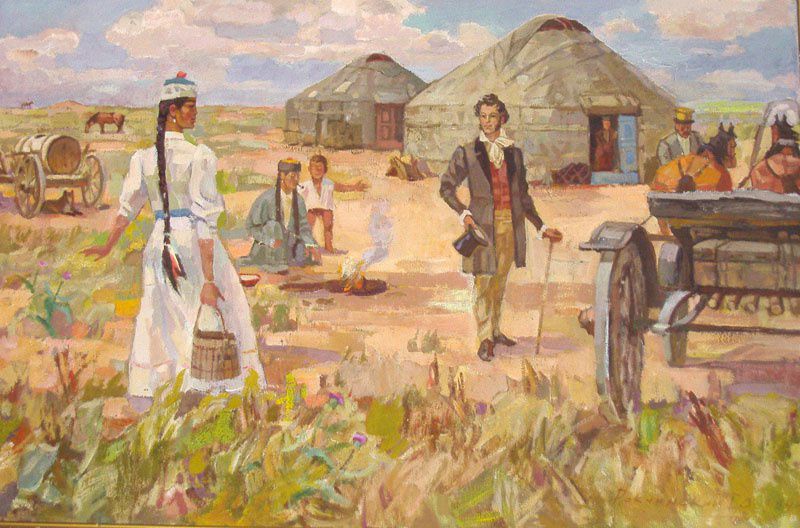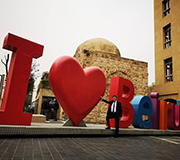Both his view of dependent arising and his advice not to harm anyone, but to help whoever you can, emphasize the practice of non-violence. This remains one of the most potent forces for good in the world today, for non-violence, motivated by compassion, is to be of service to our fellow beings.
In an increasingly interdependent world, our own welfare and happiness depend on many other people. Today, the challenges we face require us to accept the oneness of humanity. Despite superficial differences between us, people are equal in their basic wish for peace and happiness. Part of Buddhist practice involves training our minds through meditation. For our training in calming our minds, developing qualities such as love, compassion, generosity and patience, to be effective, we must put them into practice in day-to-day life.
Until relatively recently, the world's diverse Buddhist communities had only a distant understanding of each other's existence and no opportunity to appreciate how much we share in common. Today, almost the entire array of Buddhist traditions that evolved in different lands is accessible to anyone who is interested. What's more, those of us who practise and teach these various Buddhist traditions are now able to meet and learn from one another.
As a Tibetan Buddhist monk, I consider myself an heir to the Nalanda tradition. The way Buddhism was taught and studied at Nalanda University, rooted in reason and logic, represents the zenith of its development in India. If we are to be 21st century Buddhists, it is important that we engage in the study and analysis of Buddha's teachings, as so many did there, instead of simply relying on faith.
The world has changed substantially since the time of the Buddha. Modern science has developed a sophisticated understanding of the physical realm. Buddhist science on the other hand, has achieved a detailed, first-person understanding of the workings of the mind and emotions, areas still relatively new to modern science. Each therefore has crucial knowledge with which to complement the other. I believe that combining these two approaches has great potential to lead to discoveries that will enrich our physical, emotional and social well-being .While as Buddhists it is we who uphold the Buddha's teaching, his message is relevant in our broader interaction with the rest of humanity. We need to promote inter-religious understanding by underlining the fact that all religions promote the happiness of all people. Also, at a time when serious crises confront the world, when we face threats to our health and we feel saddened about the family and friends we have lost, we must focus on what unites us as members of one human family. Accordingly, we need to reach out to each other with compassion, for it is only by coming together in a coordinated, global effort that we will meet the unprecedented challenges we face.”
Editors’ note: The word Vesak means "Holiday of a Thousand Offerings." It is believed that on Vesak Day three great events occurred: the birth (Jayanti) of Shakyamuni Buddha, his full enlightenment (Bodhi) at 35 years old, and his departure to Nirvana (Parinirvana) at 80 years old.
The idea of international recognition of Vesak Day was first adopted at the International Buddhist Conference held in Colombo in November 1998.
On 13 December 1999, at the 54th UN General Assembly in New York, a UN resolution was adopted on "international recognition of Vesak Day." It was supported by many Asian Buddhist countries, as well as other countries, including Russia and the United States.
In accordance with the resolution of the UN General Assembly of 8 February 2000, this day is annually celebrated by the UN in recognition of the contribution that Buddhism - one of the oldest religions in the world - has made for two and a half millennia and continues to make at present in the spiritual development of humankind.
In 2020, Vesak begins on 7 May and lasts a week. On the day of the festival, Buddhists and lay people assemble in temples and stay there until dawn performing ceremonies: raising the Buddhist flag and singing hymns for the glory of the three holy treasures: Buddha, Dharma (his teachings) and Sangha (his disciples). Flowers are offered, candles and incense sticks are lit. A characteristic rite of the holiday is the showering Buddha statues with sweetened water or tea.
Many take a vow of silence for seven days, which symbolizes the importance of abstinence in Buddhist practice and at the same time commemoration of the Buddha. In the days of the holy Buddhist month, it is recommended to refrain from eating meat and alcohol.
In 2020, because of the COVID-19 pandemic some countries have banned mass and public ceremonies.
 On 7 May 2020, Buddhists around the world began to celebrate Vesak: the birthday, enlightenment, and death of Buddha Shakyamuni. In this regard, His Holiness the 14th Dalai Lama sent a message that reads as follows:
On 7 May 2020, Buddhists around the world began to celebrate Vesak: the birthday, enlightenment, and death of Buddha Shakyamuni. In this regard, His Holiness the 14th Dalai Lama sent a message that reads as follows: 






















